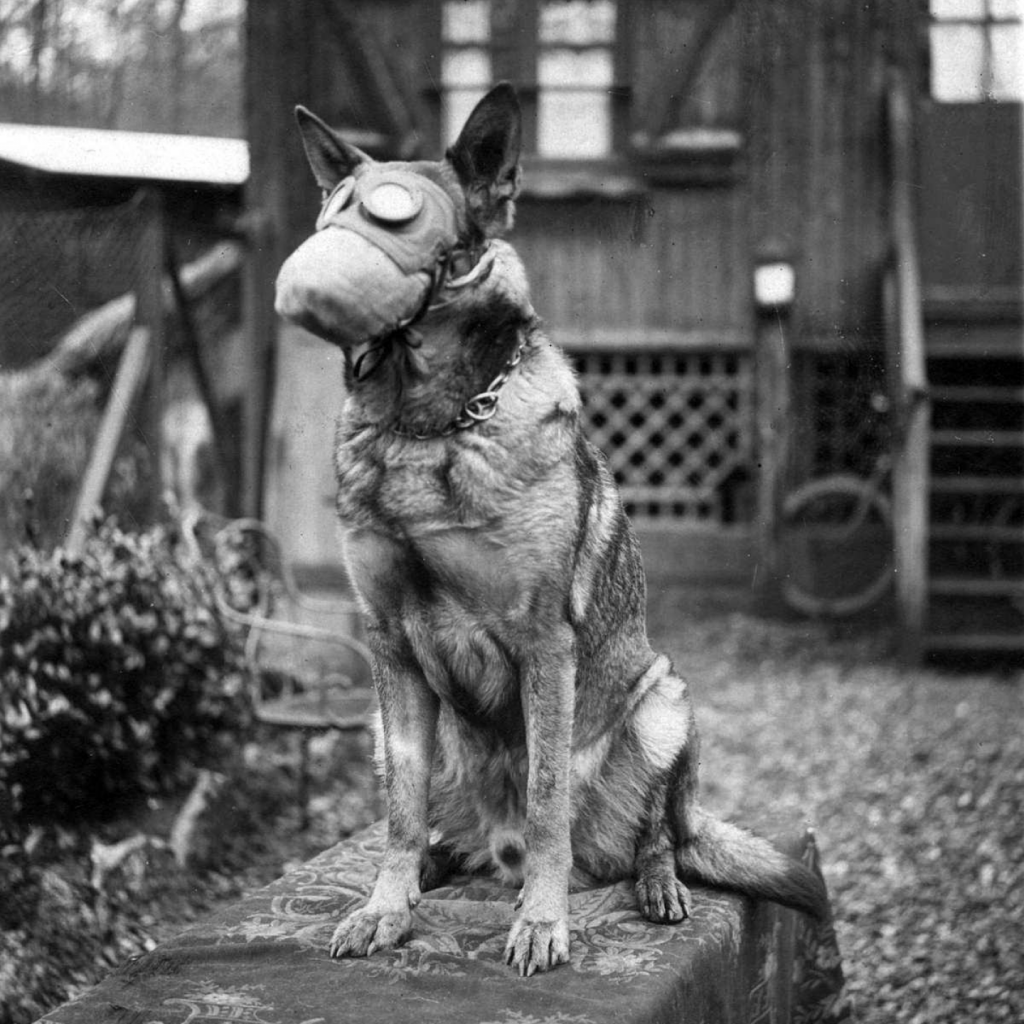Table of Contents
What if I told you that the German Shepherd and the Alsatian Wolf Dog are indeed the same breed, just sporting different names? Yes, you heard it right! The tale behind this incredible dog breed, renowned for its intelligence, strength, and somewhat enigmatic history, is as captivating as it gets.
If the terms “Alsatian” and “German Shepherd” have left you puzzled or if you’ve ever wondered, “Alsatian vs German Shepherd—what’s the difference?” then buckle up, because you’re about to embark on a thrilling journey of discovery. Stay with me as we journey back in time and across borders, unraveling the intriguing evolution of one of the world’s most beloved dog breeds.
Key Takeaways
- Origin and Evolution: German officer Max von Stephanitz bred the German Shepherd, also known as the Alsatian or the Alsatian Wolf Dog, in 1899 with the intention of producing a dog breed with a high level of intelligence, a natural aptitude for work, and a consistent set of traits.
- A Rose by Any Other Name: Despite the alternating use of the names “Alsatian Wolf Dog”, Alsatian,” and “German Shepherd,” they refer to the same breed. The name difference arose due to historical events surrounding World War I.
- Physical Characteristics: Alsatians are large, athletic dogs known for their muscular build, double coat (in various colors), straight back, and erect ears. They usually weigh between 50 and 90 pounds and stand about 22 to 26 inches tall at the shoulder.
- Temperament: Alsatians are known for their high intelligence, loyalty, courage, and protective nature. These traits make them excellent working dogs, but they are also known for being fantastic family pets when properly trained and socialized.
- Health and Care: Alsatians are generally healthy but can be prone to specific genetic conditions like hip dysplasia. They have a high energy level, so daily exercise and mental stimulation are a must. Their double coat also requires regular grooming.
- The Alsatian as a Family Pet: Alsatians can be excellent family pets, given their loyalty, protectiveness, and patience with children. They can coexist peacefully with other pets when properly socialized and trained.
A Breed Is Born: The Birth of the German Shepherd Dog
Our story begins in Germany with an officer named Max von Stephanitz, who had a passion for dogs and a vision. Von Stephanitz’s goal was to cultivate a distinctive breed characterized by high intelligence, a natural ability to work, and a consistent set of traits. His ambitions were realized through the breed we now recognize as the German Shepherd Dog (GSD).
Von Stephanitz spent years studying various shepherd dogs, primarily used to herd sheep. He observed numerous dogs exhibiting similar characteristics that lacked a unifying breed standard. His desire to amalgamate the best attributes of these dogs led to the establishment of the German Shepherd breed standard. His perseverance paid off when he found Horand von Grafath, a dog that epitomized his vision for the breed. Thus, with Horand as the foundation sire, the GSD breed was officially established.
The Purpose of the German Shepherd (Alsatian)
Understanding the breed’s working dog roots, Von Stephanitz knew that these dogs could be more than just herders. He believed their courage and intelligence made them well-suited for protection work and law enforcement. And he was right. The GSD quickly gained popularity in Germany, with the breed even being utilized during World War I.
However, when the soldiers returned home to Great Britain, they brought back more than just war stories; they also brought back German Shepherds. The breed’s entrance into British society coincided with the start of World War I, causing a wave of anti-German sentiment.
A Name Change: From German Shepherd to Alsatian Wolf Dog
As the war raged on, anything linked to Germany became unpopular in Britain. So, in a bid to distance the breed from its German origins, The British Kennel Club renamed the breed to the ‘Alsatian Wolf Dog’ in 1919.
This change was sparked by the dogs’ initial arrival in Britain from the Alsace-Lorraine region of France, an area bordering Germany. Thus, the term ‘Alsatian’ was adopted, and the ‘wolf dog’ part likely referred to the breed’s wolf-like ancestry. Von Stephanitz’s studbook confirmed the existence of several wolves in the lineage of the breed’s foundation stock.
Alsatian Wolf Dog to Alsatian to German Shepherd
The public’s reaction to the new name was mixed. Despite sustained popularity, there was pushback against the association with wolves, often perceived as dangerous and unpredictable. In response, the British Kennel Club eventually dropped ‘wolf dog’ from the ‘Alsatian Wolf Dog’ name, calling it simply the ‘Alsatian’.
The Alsatian title persisted until 1977, when the original name, German Shepherd, was reinstated. Meanwhile, in the United States, the German Shepherd Dog Club, established in 1913, changed its name to the Shepherd Dog Club following the U.S.’s entry into the war against Germany in 1917. Later, the name of the breed was changed back to German Shepherd dog, a decision welcomed by many dog lovers.
Today’s Alsatian Dog: A Beloved Breed
The German Shepherd, or Alsatian, remains one of the world’s most popular dog breeds. It’s easy to understand why: they’re loyal, courageous, and smart. They’re widely used in police work, military duties, search and rescue missions, and even as guide dogs for the visually impaired.
In essence, the German Shepherd was bred to retain its best qualities—loyalty, courage, and protective nature—regardless of its name. Whether they’re called Alsatians or German Shepherds, their value to the armed forces and families alike remains undisputed.
So the next time someone asks, “What’s the difference between an Alsatian and a German Shepherd?” you can confidently answer, “It’s not about two different breeds but two names for one incredibly versatile breed.”
The Physical Characteristics of the Alsatian Dog
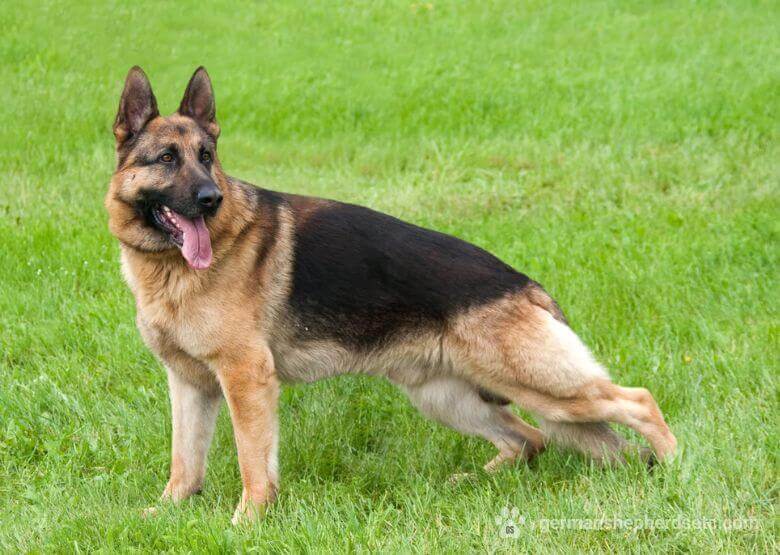
When you lay your eyes on an Alsatian dog breed, you’re instantly struck by their regal presence and well-proportioned body. The Alsatian dog exhibits several distinctive physical characteristics that contribute to its reputation as a beautiful and robust breed.
Size and Build
An adult Alsatian dog boasts an impressive size, with males typically standing between 24 to 26 inches tall at the shoulder and females slightly smaller, ranging from 22 to 24 inches. Weight-wise, males generally weigh between 65 to 90 pounds, while females tip the scales at 50 to 70 pounds.
What truly distinguishes this breed is their well-muscled, slightly elongated build that emanates strength without bulkiness. The body is sturdy and well-balanced, with the depth of the chest accounting for roughly half the height of the dog at the shoulder. This robust build makes them particularly adept at tasks that require agility and strength.
Color Variations
When it comes to coat color, the Alsatian offers a broad palette. While the most common color is the iconic black and tan, they also come in a variety of other shades, including solid black, white, blue, gray, sable, and even red and black. The color distribution can vary significantly from dog to dog, which means each Alsatian dog is unique in its appearance.
Coat Type
The Alsatian sports a double coat: an external layer that is straight and dense, coupled with a softer, thicker undercoat. This double layer offers excellent protection against harsh weather conditions, making the Alsatian dog well-suited to outdoor work.
The breed is typically categorized into two types based on coat length: short-haired or plush-coated and long-haired or long-coated German Shepherds. The short-haired variety’s coat is dense, close-lying, and harsh to the touch, while the long-haired variety has longer hair, especially around the neck, the backside of the legs, and the tail.
Unique Features
The Alsatian’s head is one of its most distinctive features. It’s proportionate to the body, with a slightly domed forehead, a strong square-cut muzzle, and a black nose. Their intelligent, almond-shaped eyes range from medium to dark brown, giving them a confident and keen expression.
Alsatians are also known for their erect, pointed ears that stand up straight when they’re alert or excited, adding to their intense and sharp look. Their bushy tail, which reaches to their hocks and is carried in a slight curve when relaxed, adds the final touch to their distinctive silhouette.
The Alsatian’s Dog Temperament and Behavior
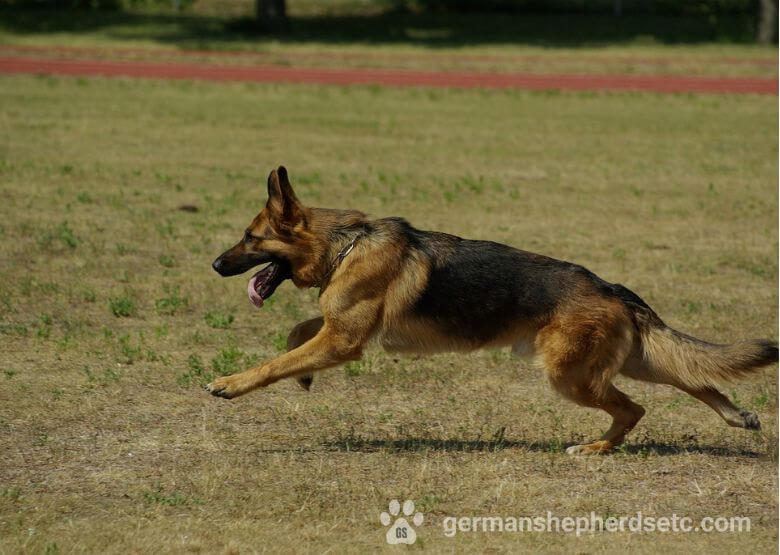
A dog’s temperament is just as important as its physical characteristics, especially when it comes to selecting the perfect canine companion. The Alsatian is admired not just for its striking appearance but also for its well-rounded personality, marked by intelligence, loyalty, and steadfastness.
Intelligence and Trainability
A standout trait of the Alsatian dog breed is its remarkable intelligence. Ranked as the third most intelligent dog breed, Alsatians have an inherent ability to understand new commands swiftly, often within five repetitions or less. This intelligence, paired with their willingness to learn and desire to please, makes them highly trainable.
Alsatians are renowned for their problem-solving skills and ability to adapt to a variety of tasks, whether it’s tracking a scent, assisting the police or military, or helping visually impaired individuals navigate their daily lives.
Loyalty and Protection
If there were one word to encapsulate the Alsatian’s temperament, it would undoubtedly be “loyal”. Alsatians are incredibly devoted to their family, forming strong bonds with their human pack. This loyalty also translates into protective behavior, with Alsatians being naturally wary of strangers and always on alert to ensure the safety of their household.
Don’t mistake this protective streak for aggression, though; Alsatians are not inherently aggressive. Proper socialization from an early age can ensure they’re comfortable around strangers and other animals.
Active and Energetic
Remember, this breed was initially developed to herd and protect sheep, meaning they are high-energy dogs that require plenty of exercise and mental stimulation. Daily walks, play sessions, and regular training can keep an Alsatian happy and prevent the development of behavioral issues associated with boredom or pent-up energy.
Sociability
Alsatians are generally good with children and can get along well with other pets, particularly if they’ve been raised together. They’re known for their gentle and patient nature around young ones, making them an excellent choice for families.
However, it’s worth noting that, like all dogs, Alsatians need proper socialization from an early age to ensure they grow up into well-rounded, sociable adults. Introducing your Alsatian dog to different people, environments, sounds, and experiences early on can help them grow into a calm, confident, and friendly dog.
Care and Health Considerations for Alsatians
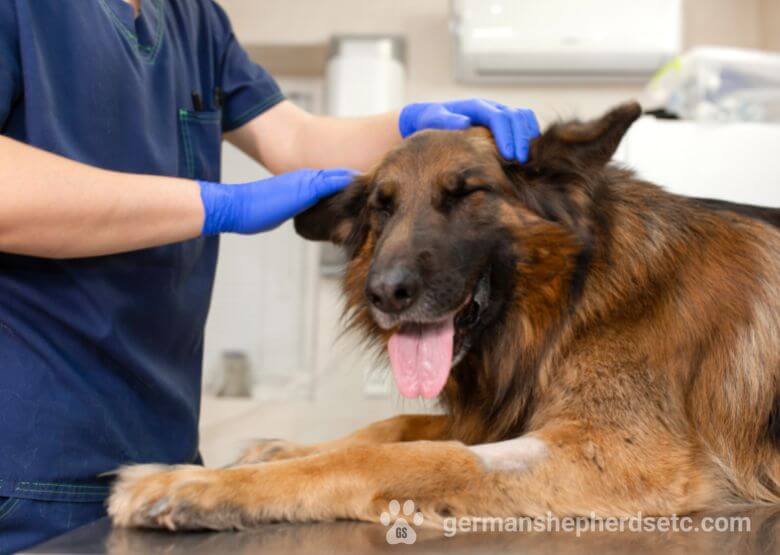
Choosing to bring an Alsatian into your life is a long-term commitment. This commitment includes understanding the breed’s general health, common health issues, life expectancy, and daily care requirements such as diet and exercise.
General Health
Alsatians are generally healthy dogs, but, like all breeds, they’re prone to certain health conditions. Not all Alsatians will get any or all of these diseases, but it’s essential to be aware of them if you’re considering this breed.
Common Health Issues
One common health issue in Alsatians is hip and elbow dysplasia, a genetic malformation of the hip or elbow joint that can lead to arthritis. Regular vet checks and maintaining a healthy weight can help manage this condition.
Alsatians are also predisposed to a genetic disorder called degenerative myelopathy, a type of spinal cord disease that can cause gradual paralysis.
Some Alsatians may suffer from a variety of heart diseases, such as subaortic stenosis and cardiomyopathy. Regular heart checkups can help identify these issues early.
Remember, regular veterinary check-ups and a healthy lifestyle can prevent or manage many of these conditions, ensuring your Alsatian lives a long, happy life.
Life Expectancy
Alsatians have a typical lifespan of around 9–13 years. This lifespan can be influenced by various factors, including diet, exercise, genetic factors, and the quality of veterinary care. With good care and regular check-ups, Alsatians can lead active, fulfilled lives well into their senior years.
Diet
Like all dogs, Alsatians require a balanced, nutritious diet to maintain their overall health. Quality commercial dog food that’s appropriate for their age, size, and activity level can provide this balance.
However, due to their size and energy level, Alsatians can benefit from diets rich in proteins and healthy fats. Always monitor your Alsatian’s weight and adjust their food intake as necessary to prevent obesity, which can exacerbate health issues such as hip dysplasia.
Exercise Needs
Alsatians are a high-energy, working breed that requires regular, vigorous exercise to keep them physically and mentally stimulated. Aim for at least an hour of exercise a day, including walks, play sessions, and training exercises. Participating in dog sports such as agility, obedience, tracking, and herding can also be an excellent way to channel their energy and intelligence.
In summary, Alsatians are active, intelligent dogs that require a balanced diet, regular exercise, and consistent vet care. Providing these essentials can help ensure your Alsatian leads a healthy, fulfilling life as part of your family.
The Alsatian as a Family Pet
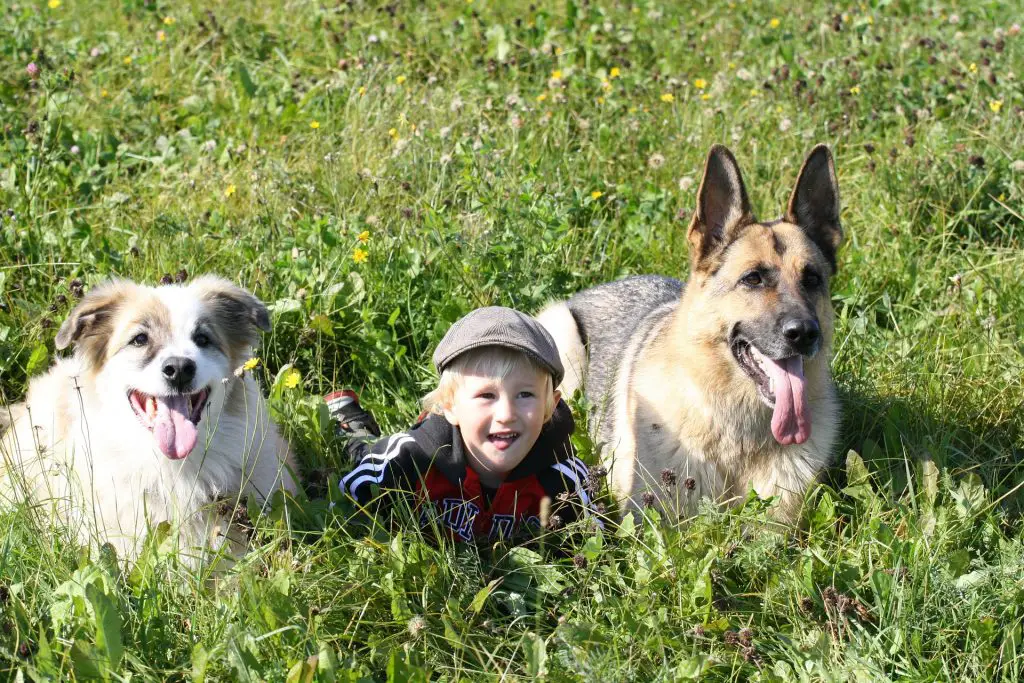
The Alsatian, also known as the German Shepherd, is more than just a beautiful breed with an impressive heritage. They can also make fantastic family pets when their needs and nature are understood and catered to. Let’s explore how the Alsatian fits into a family setting, considering their interactions with children, other pets, and their protective nature.
Interactions with Children
One of the most cherished traits of Alsatians is their remarkable gentleness and patience with children. Their loyalty extends to every member of their human pack, making them excellent playmates for kids. These dogs are patient, often tolerating the usual tugs and pats from younger children.
It’s important, however, to educate children on how to approach and touch dogs and to always supervise interactions between dogs and young kids to prevent any biting or ear or tail pulling from either party.
Getting Along with Other Pets
Alsatians can generally cohabit peacefully with other pets, especially if they are raised together from a young age. Their herding instincts may sometimes come into play, leading to them “herding” other pets around the house.
While they can coexist with other dogs, early socialization is crucial. Introduce your Alsatian dog to other dogs in a controlled, calm environment to foster positive interactions. With cats or smaller pets, Alsatians will usually get along fine, provided they’ve been properly socialized and trained.
Protective Instincts
Alsatians are known for their natural protective instincts, a trait that makes them excellent watchdogs. They are generally reserved toward strangers but not hostile. Once they recognize someone as a non-threat, they usually accept them quite quickly. Their protective instincts make them not only good protectors of the home, but also of the family members within it.
Activity Level and Space Needs
Keep in mind that Alsatians are active and large dogs that need a good amount of space to move around. They do best in homes with a backyard where they can expend their energy. If you live in an apartment, daily walks and trips to the dog park are mandatory to keep your dog healthy and happy.
In conclusion, Alsatians can fit wonderfully into family life, providing companionship, protection, and boundless love. As long as their exercise, training, and socialization needs are met, they can be loyal, affectionate, and dependable family pets.
Conclusion
Choosing a family pet is a significant decision, one that can shape your family’s lifestyle for many years. A well-chosen pet becomes an integral part of your family, offering companionship, entertainment, and even protection. An Alsatian can be the perfect choice for you.
In this guide, we’ve dug deep into the history, characteristics, and personality traits of the Alsatian, revealing a breed that is not only highly intelligent and versatile but also fiercely loyal and protective. These dogs have served humanity in numerous roles, from herding sheep to assisting in police and military services, from guiding the blind to comforting the disabled.
But the Alsatian is not just a working dog with high intelligence. Their high intelligence, natural protective instinct, and deep bond with their human families make them ideal family pets. Their patience and gentleness with children, their ability to coexist with other pets, and their loyalty towards their human pack make them a valuable addition to your home.
Remember, owning an Alsatian requires commitment. These dogs have high exercise needs, and they thrive on mental stimulation. They require socialization, training, and a balanced diet. With this commitment comes a reward, though: the unyielding loyalty and companionship of one of the world’s most versatile and intelligent breeds.
In a world with a different dog for every lifestyle, the Alsatian stands out as a breed that is as versatile as it is loyal, as intelligent as it is affectionate. Whether you call them Alsatians or German Shepherds, they remain the same steadfast companions that Max von Stephanitz envisioned more than a century ago. So, whether you’re a dog lover seeking a faithful companion, a family wanting a protective pet, or a shepherd looking for a reliable herd dog, the Alsatian might just be the perfect breed for you.
Embrace the Alsatian. Enjoy their companionship. And cherish the difference they’ll make in your life. It’s not just a dog—it’s an Alsatian. And that makes all the difference.

